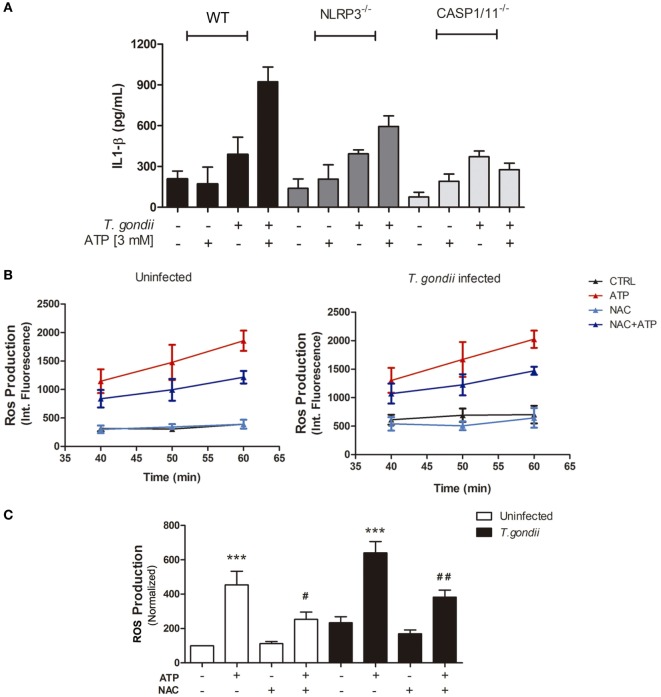Figure 4.
Extracellular ATP (eATP) is important for IL-1β secretion via canonical NLRP3 inflammasome induction and reactive oxygen species (ROS) production, in T. gondii-infected macrophages. Bone marrow-derived macrophages from C57BL/6 (WT), NLRP3−/− or Caspase-1/11−/− mice, either uninfected or infected with T. gondii tachyzoites, were kept untreated or were treated with ATP, and then culture supernatant samples were used to estimate IL-1β secretion (A). Treatment with 3 mM eATP (for 30 min) was performed 2 h post-infection, and all cells were incubated for 24 h prior to IL-1β quantification. Data represent mean ± SEM from triplicates. For ROS detection, before eATP treatment, some cultures were incubated with 10 mM N-acetyl cysteine (NAC) and ROS production was detected. (B,C) ROS levels in cells treated for 30 min, with NAC and then with 3 mM eATP (for up to 60 min), 2 h post-infection. ROS levels were estimated by H2DCFDA fluorescence, at different time-points during treatment with eATP (B), with normalized data from the 50-min time-point in (C). Data represent mean ± SEM of three independent experiments performed in triplicates. #p ≤ 0.05 and ##p ≤ 0.01 vs. corresponding samples treated with eATP only; ***p ≤ 0.001 vs. the corresponding untreated control (by one-way ANOVA followed by Tukey’s test).

